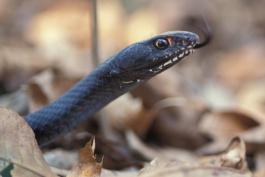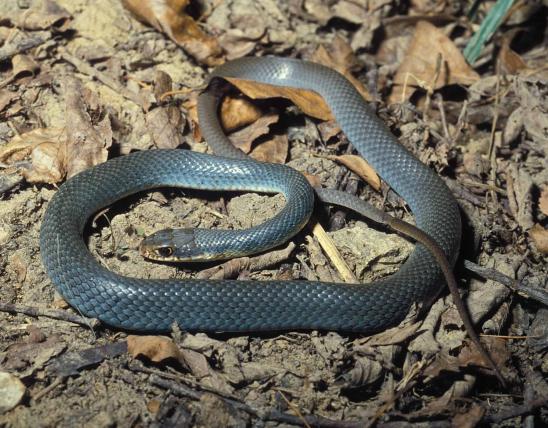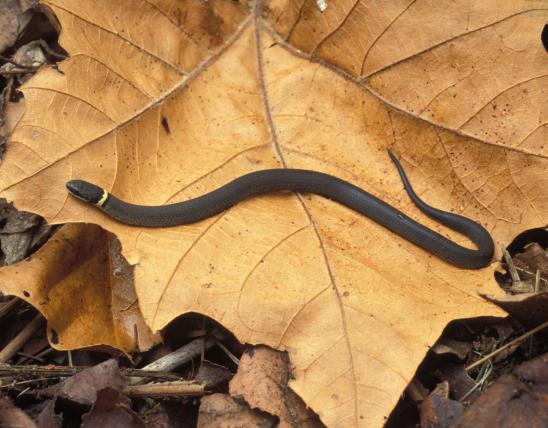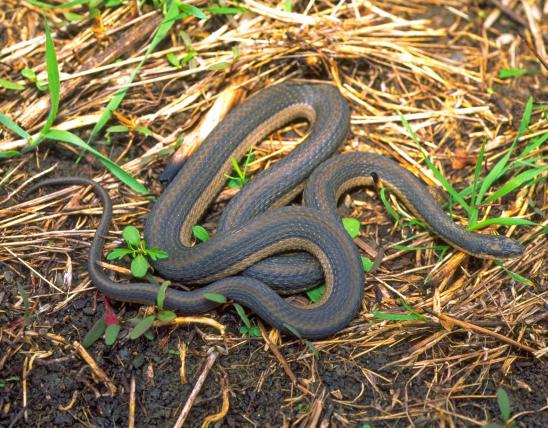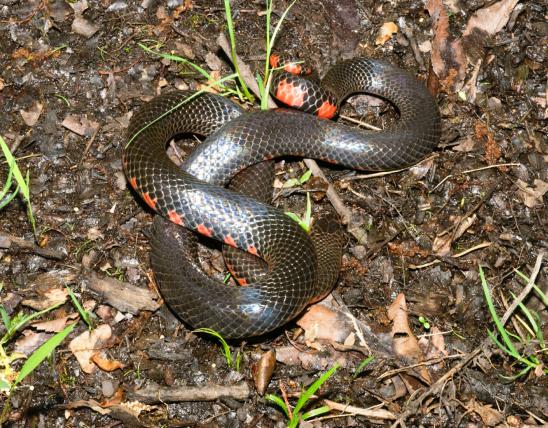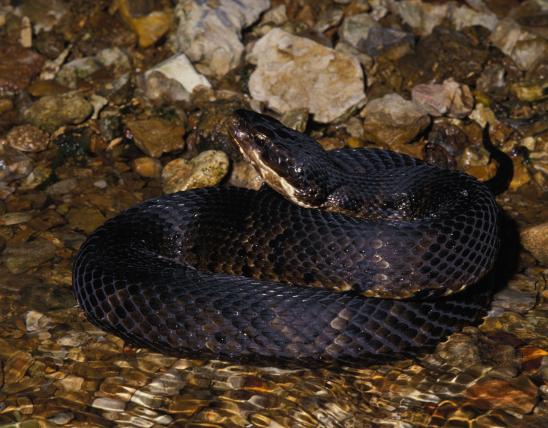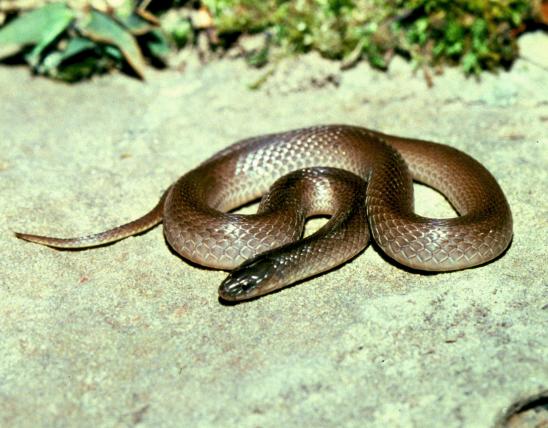
The eastern coachwhip is a large, slender, fast-moving snake that is dark-colored in the front part of the body and light-colored at the rear. The color varies. Generally the front two-thirds of the body is dark brown or black, and the hind one-third is tan or reddish brown. The belly may be brown, tan, light yellow, or pink. Individuals from southwestern Missouri often are completely black or dark brown. Some individuals have broad pink bands along the back. The dorsal (upperside) scales are smooth.
Juvenile eastern coachwhips are marked with numerous dark brown crossbands over a tan ground color in the front part of the body, which fades to an overall tan at the rear. The dark markings disappear with age.
Coachwhips escape danger with an explosive burst of speed. They will fight savagely and bite to defend themselves. They are not venomous, however.
Adult length: 42 to 60 inches (3½ to 5 feet); occasionally to 102 inches (8½ feet). One of Missouri's longest snakes.

In Missouri, generally restricted to the Ozarks and the Ozark border areas; thus, they occur mostly in the southern half of the state, excluding the Bootheel lowlands.
Habitat and Conservation
The eastern coachwhip is active on sunny days from April until early November. It lives on dry, rocky glades and brushy or wooded hillsides. It also occurs along the edges of prairies where there is ample brush and other shelter. They are primarily active during the daytime hours.
On cool days, coachwhips hide under flat rocks or in small mammal burrows. They occasionally raise the upper portion of their body to get a better view of the surrounding area.
This species overwinters in rock crevices, under large rocks, or in mammal burrows.
When approached, a coachwhip will normally escape with an explosive burst of speed to retreat under a nearby rock or up a tree. If an individual is cornered, it will coil defensively, vibrate its tail, fight savagely, and bite to defend itself.
Food
Coachwhips eat grasshoppers, cicadas, rodents, small birds, lizards, and other species of snakes. They will climb trees to eat bird eggs and nestlings. Coachwhips are not constrictors. They actively search for prey. Once prey is located, they quickly capture it with their mouth and immediately swallow it. Young coachwhips consume insects and small lizards.
Life Cycle
Courtship and mating likely occur in April or May soon after the snakes emerge from winter retreats. Mating may also occur in June and possibly also in the fall. In late June through July, the female lays 4–24 eggs in loose soil, animal burrows, rotting logs, or decaying leaf litter. These hatch in late August into September, with an average incubation period of 64 days. Lifespan in captivity has exceeded 18 years.
Human Connections
Many snake species are burdened with unfair, undying myths that paint them to be much more dangerous and harmful than they are. This species, though it fights savagely to defend itself, is ultimately harmless to people. The common human fear of snakes is learned at an early age. Education corrects our prejudice.
A coachwhip snake thrashes when captured, which led to the stubborn myth that this snake can whip a person to death. For example, one antique Ozark belief was that a coachwhip could "catch a child by the lips, take one turn round his neck, and whip him very severely; sometimes two coachwhips are said to work together, one holding the victim while the other lashes him." Such colorful folklore says much more about humanity than it does about snakes.
The eastern coachwhip is Missouri's fastest snake, reaching a speed of up to 3.6 mph. But although it is fast, it cannot move as fast as a person can run.
Ecosystem Connections
As predators, coachwhips control populations of the animals they consume.
As with many other predatory species, coachwhips can be preyed upon themselves by larger animals, including mammals and predatory birds. The eggs and young are especially vulnerable. Adults use their speed and ability to fight to avoid predation. Juveniles may feign death to escape predators.

